Personally, I love freezing fruits to savor their flavors out of season. I often use frozen cantaloupe chunks in place of ice cubes for a naturally sweet twist in drinks, maintaining the flavor without watering it down.

Blended into smoothies, they provide a creamy texture and eliminate the need for added sugars.
During colder months, when fresh cantaloupe isn’t at its best, these frozen pieces are perfect for adding a summery touch to fruit salads or as a quick, healthy snack.
The softer texture after freezing is an added bonus, lending itself well to various culinary uses. So, let me guide you on how to freeze cantaloupe effectively and store it for future enjoyment.
Highlights
- Stash frozen cantaloupe in your freezer, and you can enjoy a slice of summer anytime within the year, though its peak freshness and taste are best enjoyed within the first few months.
- Ever wonder how to choose the best cantaloupe for freezing? Look for ones that feel heavy, give just a bit at the end, and smell sweetly divine.
- Freeze cantaloupe chunks to sweeten drinks without dilution and add a creamy texture to smoothies without extra sugar.
In this article:
Easy Steps to Prepare your Cantaloupe for Freezing
Want to store your cantaloupe for longer while maintaining its quality? Proper cleaning and cutting are essential steps for effective freezing:
1. Wash the cantaloupe
2. Cut the melon in half with a sharp knife
3. Scoop out the seeds with a spoon
4. Remove fruit from rind
5. Slice into desired shapes – wedges, cubes, sticks, or melon balls.
Selecting Ripe Melons
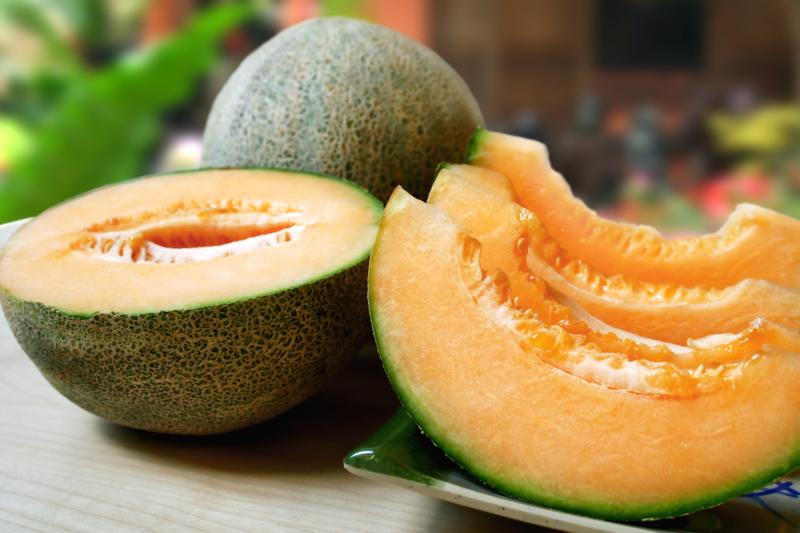
It’s important to be selective about the melon you freeze; ideally, it should be perfectly ripe for the best flavor and texture.
Here are some signs to look for when selecting a ripe cantaloupe for freezing:
• Heft: Pick it up; the melon should feel heavy for its size, indicating good juiciness.
• Stains: Check the surface for any stains or different coloration, which may indicate that the cantaloupe has deteriorated.
• Firmness: Gently press the blossom end (opposite the stem); it should yield slightly under pressure.
• Color: Look for a creamy or golden undertone beneath the netted skin.
• Sound: Give it a tap; a ripe cantaloupe will sound dull, not hollow.
• Aroma: Smell the blossom end; a ripe melon will have a sweet, musky scent.
Types of Cantaloupe you Might Find
When selecting a cantaloupe for freezing, it’s beneficial to understand the differences between various types. Each variety has its unique characteristics, affecting both flavor and texture:
1. North American Muskmelons
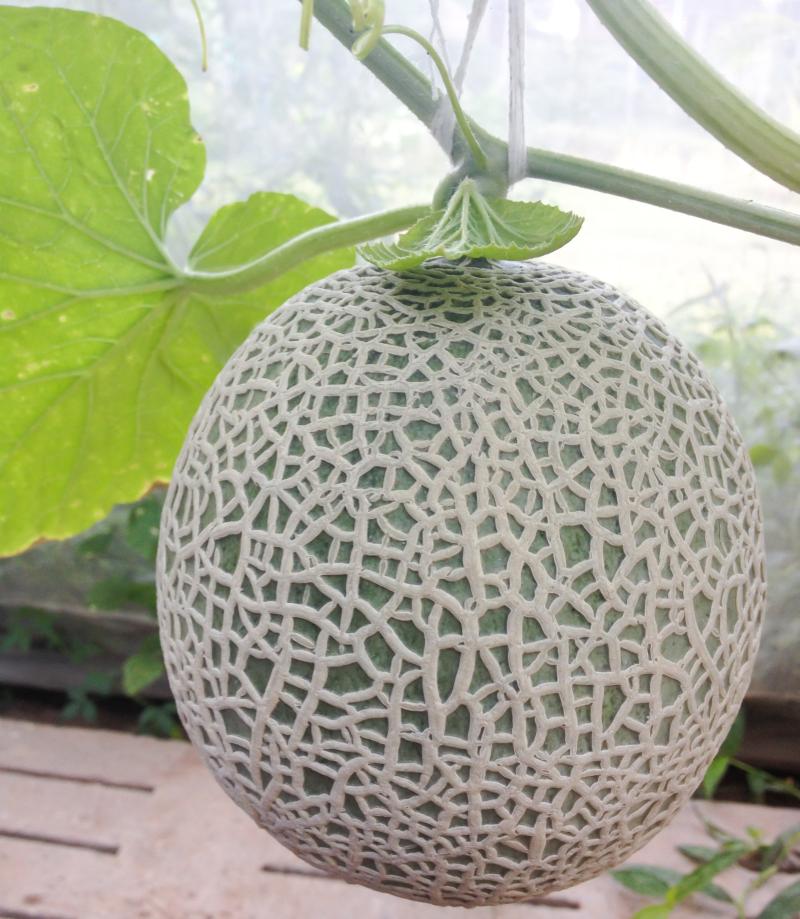
These are what most people in the U.S. commonly recognize as cantaloupes. They have a characteristic heavy netted rind and tend to be larger.
The flesh is usually a rich orange, with a sweet, slightly musky flavor. They’re perfect for freezing due to their robust sweetness.
2. Charentais
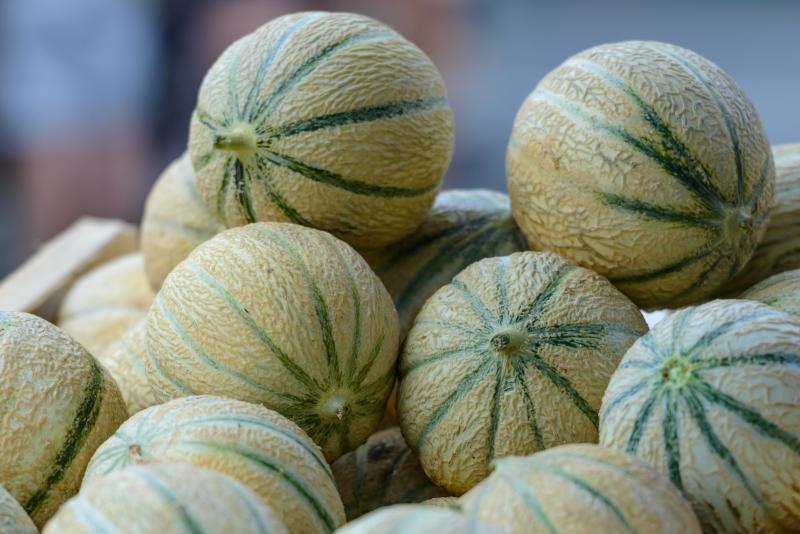
Charentais melons are smaller and often considered a gourmet variety. Originating in France, they have a smoother, grey-green rind without the netting.
The flesh is a deeper orange, intensely aromatic, and sweeter than their North American counterparts. Their rich flavor is ideal for a more sophisticated frozen treat.
3. Yubari
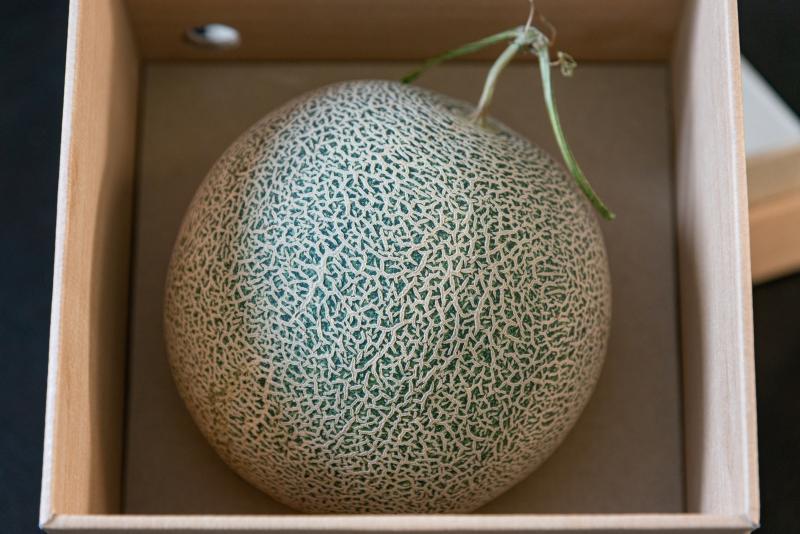
Japanese Yubari melons are known for their perfectly round shape and exceptionally sweet flavor.
4. Cantalupo
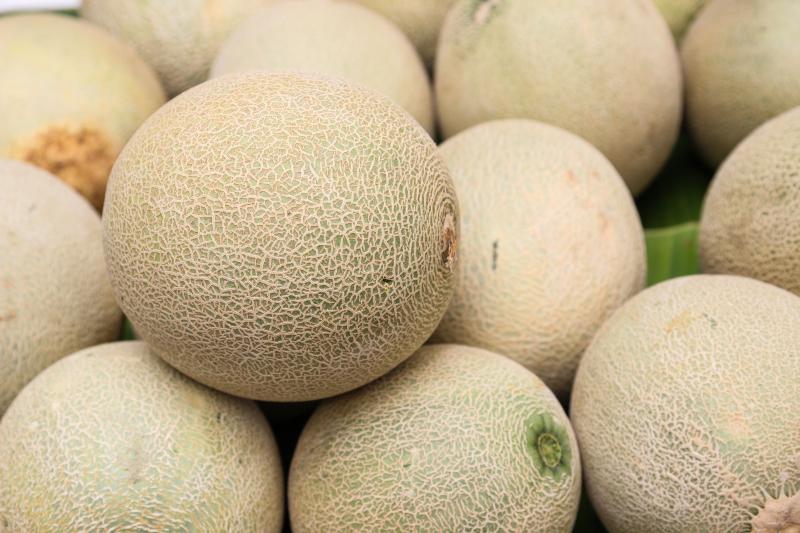
Italian cantalupo, true to its heritage, offers a more nuanced, subtly sweet taste.
The key is to ensure that regardless of the variety, the cantaloupe is ripe, as this will guarantee the best flavor and texture once frozen.
A ripe, delicious muskmelon not only promises a delightful taste but is also a treasure trove of vitamins.
Freezing Methods
Once you’ve prepared your cantaloupe for freezing, it’s time to choose a freezing method that suits your needs.
1. Cantaloupe Puree
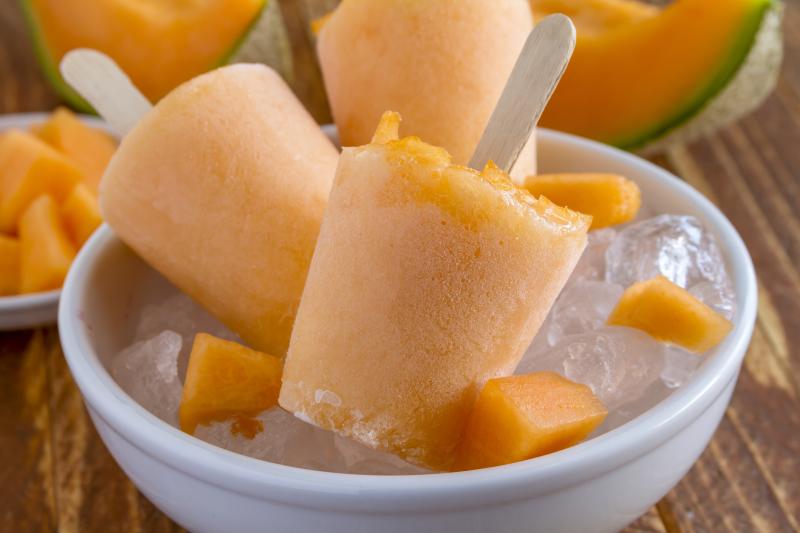
Freezing cantaloupe as a purée offers a versatile way to enjoy its sweet, summery essence in smoothies, desserts, refreshing drinks, or even as homemade popsicles.
Simply blend ripe cantaloupe into a smooth purée, pour it into ice cube trays or airtight containers, and freeze.
This method not only saves space but also makes it easy to portion out the perfect amount of cantaloupe flavor for your recipes, anytime you need a tropical touch.
2. Chunks or Pieces
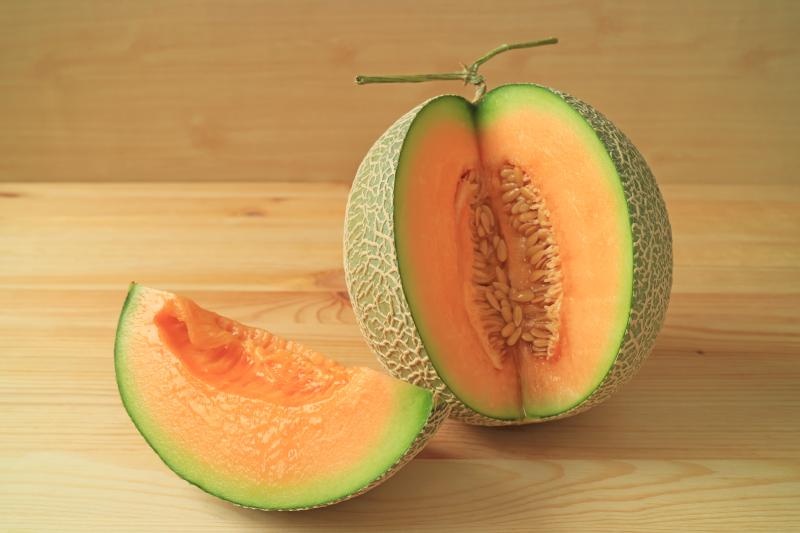
These frozen pieces are perfect for making smoothies, slushies, or enjoying as a frosty treat.
1. To freeze cantaloupe chunks or pieces, first, remove the rinds and seeds, and then cut the cantaloupe into bite-sized pieces or larger chunks, depending on your preference.
2. You might add a sprinkle of lemon juice on the cut pieces can help maintain their vibrant color and fresh taste.
3. Arrange these pieces on a baking tray lined with parchment paper, ensuring they’re spread out in a single layer, and freeze for at least an hour.
4. Once frozen, transfer the pieces into airtight containers or freezer bags, removing as much air as possible to prevent ice crystal formation.
3. Making Frozen Cubes
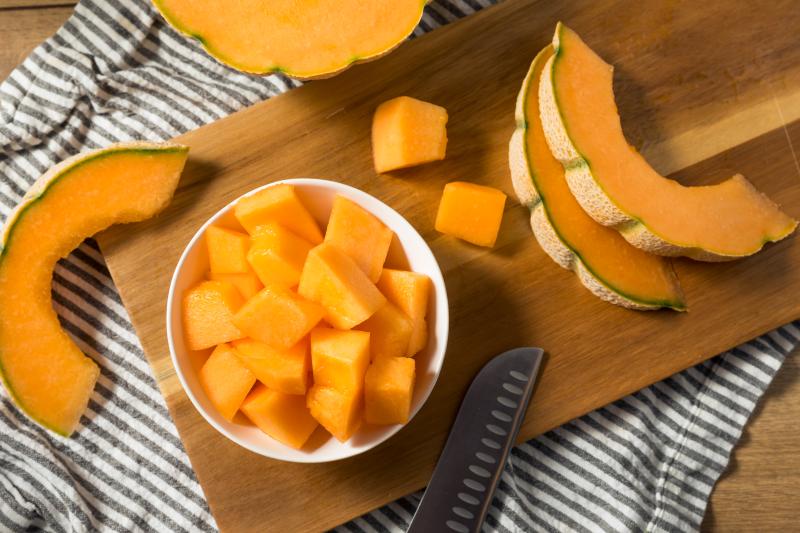
Creating frozen cantaloupe cubes is a simple and convenient method.
1. Cut the cantaloupe into small, even-sized cubes and place them on a baking sheet in a single layer.
2. Freeze the sheet until the cubes are completely solid.
3. After that, transfer the frozen cubes into a resealable plastic bag for easy storage. These cubes are great for adding a sweet, melon flavor to drinks or as a quick, cold snack.
4. Whole Melon
Freezing a whole cantaloupe is ideal when you have limited preparation time or prefer to store large quantities of fruit at once.
Simply place the entire previously prepared cantaloupe in a freezer bag; you may consider cutting it into halves or quarters if space is an issue.
With whole cantaloupes, the rind naturally protects the flesh from freezer burn and flavor loss.
Using Airtight Packaging
When freezing fresh cantaloupe, the goal is to preserve its natural moisture and flavor, which is why airtight packaging is often recommended. There are several methods to achieve this:
Airtight Containers or Freezer Bags
- Airtight Containers: Transfer the frozen pieces into the airtight containers. Seal them tightly to keep air out and preserve the quality of the fruit.
- Freezer Bags: Place the frozen cantaloupe pieces in freezer bags. To remove air from the bags, you can use a straw to suck out excess air, a vacuum sealer if available, or even submerge the open bag in water (the water pressure will force out the air). Once the bags are air-free, seal them tightly.
Wrapping with Plastic Wrap
Plastic wrap is more suitable for wrapping individual pieces or smaller portions of cantaloupe.
It’s essential to achieve an airtight seal when wrapping these pieces to prevent freezer burn (when food dries out and gets damaged in the freezer). Ensure there are no gaps or air pockets, and press the wrap edges to create a tight seal.
Parchment Paper
For cantaloupe, which is best preserved by minimizing exposure to air, it’s generally better to use plastic wrap or airtight containers when freezing.
So, while you can use parchment paper if you have no other options, it’s not the optimal choice for freezing your musk melon.
Storing
While properly frozen cantaloupe can maintain its safety and quality for up to 9-12 months.
It’s important to note that the flavor and texture may gradually deteriorate over time in the freezer. For the best taste and quality, it’s advisable to consume frozen cantaloupe within the first few months of freezing.
While it may still be safe to eat after a year, the longer it’s stored, the more likely it is to experience changes in taste and texture.
How to Thaw Frozen Cantaloupe
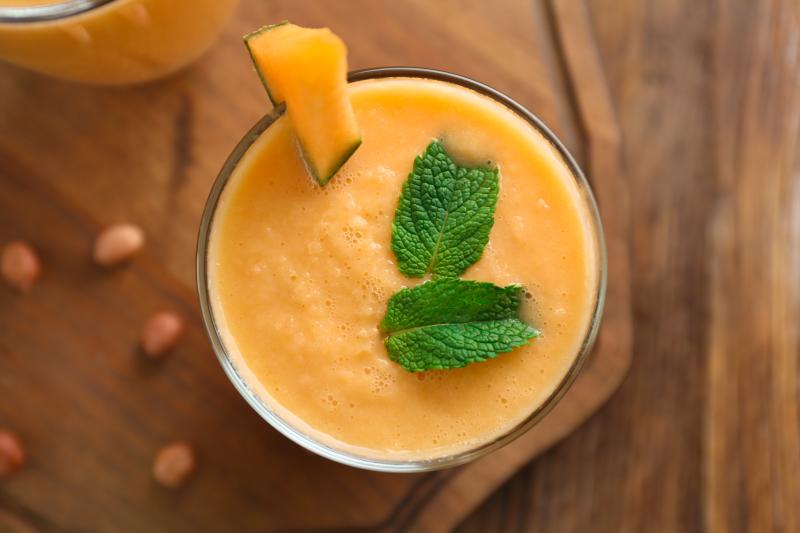
Regardless of the method you choose, always make sure to keep the cantaloupe sealed in an airtight container or bag to prevent contamination and preserve its quality. Once thawed, use the cantaloupe promptly for the best taste and quality.
Here are the best methods for thawing frozen cantaloupe and the recommended time frames:
In Refrigerator
It is the safest and most effective method.
- Place the frozen cantaloupe in an airtight container or freezer bag and leave it in the refrigerator.
- 4-6 hours for small portions approximately
- Up to 24 hours for larger quantities to fully thaw.
At Room Temperature
For a quicker thaw, you can leave the frozen cantaloupe at room temperature, but this method is less recommended.
- Place the fruit in a sealed container or bag, ensuring it’s airtight to prevent contamination.
- Small portions may take 1-2 hours to thaw, while larger quantities may take longer.
In Microwave
If you’re in a hurry, you can use the microwave to thaw cantaloupe, but it should be done with caution.
- Use the microwave’s defrost or low-power setting and check the fruit regularly to avoid overheating.
- Microwave thawing is faster, with small portions taking a few minutes.
Submerge it in Cold Water
Another quick method is to thaw cantaloupe under cold running water.
- Place the fruit in a waterproof bag and submerge it in cold water.
- Change the water every 30 minutes.
- Small portions may take 1-2 hours using this method.
- Avoid using hot water or high-temperature settings, as they can lead to loss of flavor and texture.
To Sum it Up
Freezing cantaloupe allows you to enjoy its sweet flavor and unique texture year-round.
Proper preparation and freezing methods are key to preserving its freshness. Whether you freeze whole cantaloupes, chunks, or cubes, each method has its steps for optimal results.
Select ripe cantaloupes for the best flavor and use airtight containers or bags for storage.
Frozen cantaloupe is versatile, great in drinks, smoothies, fruit salads, and as a healthy snack. It offers a softer texture post-freezing, making it suitable for various culinary uses.
Freezing extends its shelf life and unlocks countless culinary possibilities, ensuring a taste of summer anytime you desire.